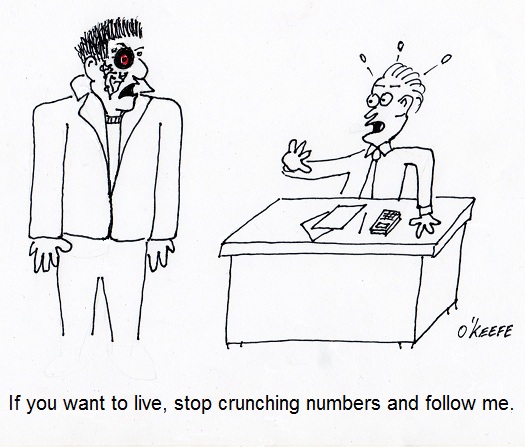|
Imagine having freshly baked pastries available to you all day long, every day, while at work. I’m not talking about someone bringing in a box of donuts to share, I’m talking about baked goods on a massive scale. This is what I experienced in one of my design engineering positions within the food industry. These baked goods constituted the articles of manufacture of the food plant, and they presented a constant temptation to me. Just what constitutes an article of manufacture is another aspect of the second hurtle which must be passed to determine patent eligibility. It is addressed under federal statutes governing the same, 35 USC § 101, and is contained within the same area as the discussion of what constitutes a machine, a subject we took up previously in this series. Why bother defining articles of manufacture? Well, while hearing the patent case of Diamond v. Chakrabarty regarding genetically engineered bacterium capable of eating crude oil, the US Supreme Court saw fit to define the term so as to resolve a conflict between the inventor and the patent office as to whether a living organism could be patented. The net result was the Court declared that in order to be deemed a patentable article of manufacture the object must be produced from either raw or man-made materials by either hand labor or machinery and must take on “new forms, qualities, properties, or combinations” that would not naturally occur without human intervention. In other words, a creation process must take place and something which did not previously exist must be caused to exist. The court’s definition of articles of manufacture encompasses an incredible array of products, much too vast to enumerate here. Suffice it to say that the defining characteristic is that if it should consist of two or more parts, there is no interaction between the parts, otherwise it could be categorized as a machine. In other words, the relationship between their parts is static, unmoving. An example would be a hammer. It’s made up of two parts, a steel head and wooden handle. These parts are firmly attached to one another, so they act as one. Next time we’ll continue our discussion on the second hurtle presented by 35 USC § 101, where we’ll discuss what is meant by composition of matter. |
Posts Tagged ‘design engineering’
Determining Patent Eligibility – Part 5, Manufactured Articles
Monday, May 6th, 2013Right Brain vs. Left Brain Thinking
Monday, November 29th, 2010| A few weeks ago a high school student contacted me out of the blue. He had become familiar with me through one of my blog articles and asked, “What does it take to become a successful engineer?”
What followed was a nice conversation that covered the obvious and not so obvious. “It helps to have a knack for math and science,” I said. “Engineering school is tough, so focus and self discipline are also required,” I continued. Then I dove into a less often discussed area, how continuing improvements in communications and information technology are fueling global competition. But who doesn’t know that, right? What many don’t know, however, is that this has opened the playing field wider than it’s ever been before, pitting engineers educated in the United States against their foreign counterparts and thereby driving the demand for U.S. trained engineers down. It’s not just customer service centers that are experiencing mass migrations to foreign shores. “Global outsourcing has hit the engineering field hard,” I told him. The net result is that profit minded businesses in the U.S. are often opting to contract engineers, both domestic and foreign, on an as-needed basis rather than pay to acquire them as full time employees. Once the decision to contract rather than hire has been made, the next unit in the equation of profitability prompts the question, “Should we give the work to an engineer residing in the U.S. or one who lives abroad?” Often this is the defining question which then leads to the decision to work with engineers residing on foreign shores. Their cost of living is lower, and they’ll work for lower wages. It’s as simple as that. What had up until that point been a pleasant conversation quickly took on the dark mantle of frank reality. I wished him luck in his career plans and our conversation ended. All this got me thinking about Daniel Pink’s book, A Whole New Mind: Moving from the Information Age to the Conceptual Age. In a nutshell, Mr. Pink suggests that engineers who tend to think with their right brain lobe more than their left will be more likely to be in demand in the U.S. Never heard of the right-brained versus left-brained thinker? Read on. Science has found that those who are dominated by left brain thinking tend to lack “peripheral vision” and business sense. They’re content with crunching numbers in formulas and cranking out massive amounts of tedious work, activities which don’t require much creativity. Innovation and thinking outside the box just aren’t their fortés. In other words they’re good worker bees, and this, unfortunately, makes them virtually interchangeable. Advances in technology have made it easier than ever to replace left brained engineers with computer software. Many operations can be reduced to plugging numbers into software, which then spits out answers. And thanks to advances in telecommunications, it has become easier than ever to outsource the left brain dominated engineers’ formula-driven activities to other countries where the pay scale is lower. Right brained people, on the other hand, tend to be artists and inventors. Science pegs them as being in tune with the big picture, including business savvy skills like innovating and synthesizing, developing strategies, managing projects, and leading others. Einstein made the observation that true genius lies in creativity, and he could add to this statement that it also goes a lot farther to guarantee job security. So until we can invent a true thinking computer, you know, the Terminator type, engineers and other professionals who are required to use right brain skills will enjoy a greater degree of job security than their left brain dominated counterparts. Mr. Pink offers three questions to those concerned with job security:
Answering yes to any of these could be hazardous to your long term career goals. _____________________________________________ |





